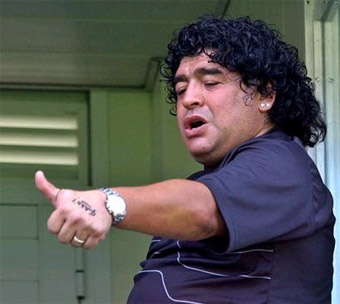The result is a massive blow to Anwar’s comeback hopes. But he alleged the poll was fraudulent and irregular. Speaking from Kuala Lumpur, he said "I am sad for Malaysia. I've been talking about fraudulent process all this while, but I didn't think it was going to be so bad ... the intimidation, the blatant bribery and the whole conduct of the election today”. Nonetheless he claimed the defeat would not impact his political comeback.
Selangor surrounds the federal territory of the capital KL and is Malaysia’s most prosperous state. The election was viewed as a barometer of Keadilan’s support. Keadilan is a centrist party founded by Wan Azizah Wan Ismail, Anwar’s wife while he languished in prison. His release in 2004 has revived the party’s fortunes which flagged while Anwar was out of the limelight in jail.
Anwar Ibrahim has long been one of Malaysia’s most controversial politicians who spent two separate terms in prison. Now approaching 70 years, he was once seen as a future prime minister. Anwar was educated at the University of Malaya where he did Malay studies and became active in student politics. He was arrested in 1974 during student protests against poverty. He was detained for 12 months under the Internal Security Act (ISA) without trial at the Kamunting detention camp for political prisoners.
Anwar also founded a student movement Persatuan Kebangsaan Pelajar Islam Malaysia (PKPIM). After his imprisonment, Anwar became a symbol for the student movement and a thorn in the official government’s side. In 1982, he surprised everyone by switching sides and joining Mahathir Mohamad’s United Malays National Organisation (UMNO). Mohamad had been made Prime Minister the year before and under his tutelage Anwar quickly climbed the ranks of the organisation. He moved through a succession of ministries in the eighties. By 1993 he was deputy Prime Minister and it was clear he was being groomed to eventually replace Mahathir in the top job.
But things started to go wrong for Anwar in 1997. In July that year the East Asian economy went into sudden meltdown. Financial collapses in Thailand and South Korea affected local currencies and the stock markets. Malaysia was one many countries impacted. Mahathir blamed the West for the crisis and accused George Soros of ruining the Malaysian economy by currency speculation. Finance minister Anwar meanwhile, agreed to an IMF plan to implement an austerity package, end corruption, and open the economy to competition. His free market approach won him many plaudits including Newsweek’s magazine’s Asian of the Year in 1998. But his anti-corruption moves brought many Malaysian companies to the brink of bankruptcy and was opposed by his boss under pressure from business allies.
Anwar then became the target of sexual innuendos and corruption hints. With the help of the Mahathir administration, journalist Khalid Jafri spread the rumours in a book called “50 Reasons Why Anwar Cannot Become Prime Minister”. Although Anwar obtained a court injunction against its publication, the book caused Anwar irreparable damage. Mahathir fired him from the Cabinet in September 1998 on allegations of misconduct. Anwar hit back and launched a massive rally of 100,000 people to the Prime Minister’s residence in KL demanding reforms.
 That evening Anwar was arrested. He appeared in court a week later with a black eye that the Government insisted was “self inflicted”. Anwar was tried and convicted of corruption and sodomy and sentenced to 15 years in prison despite the protests of worldwide human rights groups. He was freed in 2004 after Malaysia's top court overturned the sodomy conviction. Anwar has said the charges were fabricated.
That evening Anwar was arrested. He appeared in court a week later with a black eye that the Government insisted was “self inflicted”. Anwar was tried and convicted of corruption and sodomy and sentenced to 15 years in prison despite the protests of worldwide human rights groups. He was freed in 2004 after Malaysia's top court overturned the sodomy conviction. Anwar has said the charges were fabricated.Due to the terms of his expired corruption charges, Anwar must remain out of politics until 2008. He has announced his intention to return when his period of disqualification ends. In the meantime he has held teaching positions in Oxford and Washington and joined the board of several international organisations such as AccountAbility and Foundation for the Future.
Anwar fancies his chances against Mahathir’s handpicked replacement. Abdullah Ahmad Badawi has been Prime Minister since 2003 and is in a strong position after winning 198 out of 220 seats in the 2004 election. But his old mentor Mahathir has publicly criticised his replacement alleging freedom of the press has diminished under Badawi’s watch. There are also allegations of cronyism and charges that Badawi sleeps through important meetings. Despite his weaknesses, this week’s state by-election leaves him in a strong position to retain Malaysia’s leadership in 2008.


























